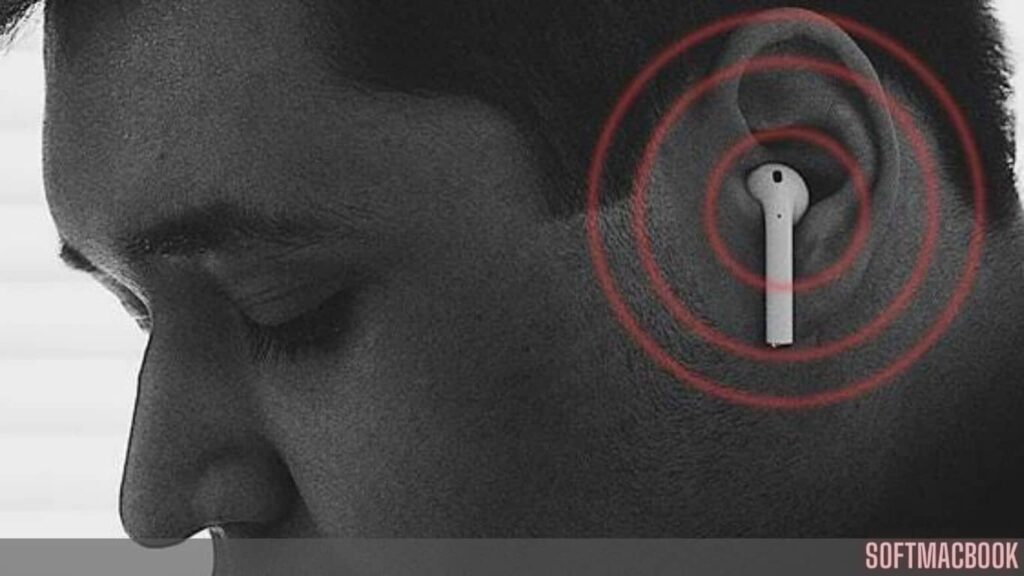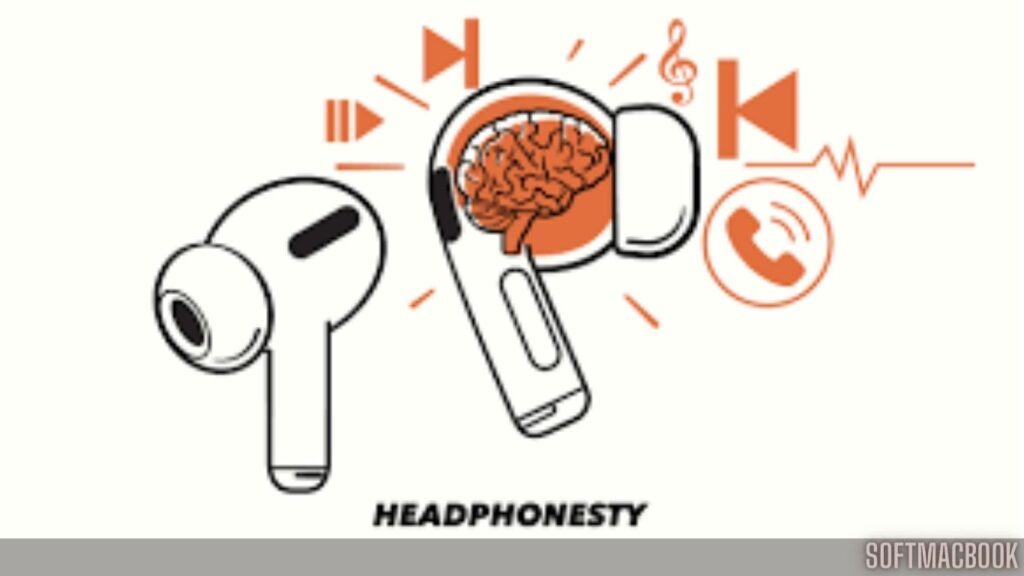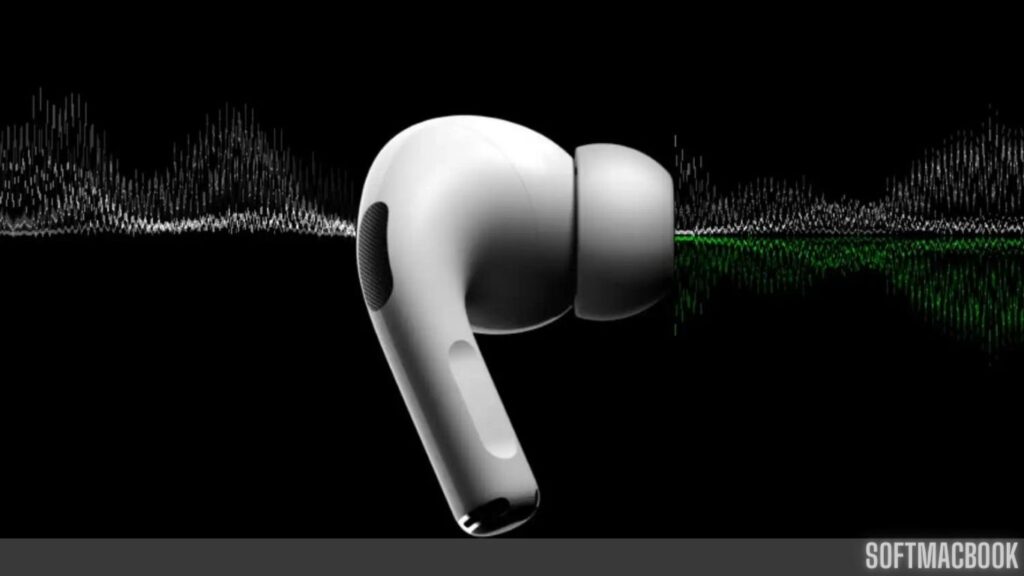Are you an avid AirPods Pro user who has experienced unexplained headaches? In this blog post, we will dive deep into the realm of Airpods Cause Headaches and possible headaches solutions.
Perhaps you’re considering purchasing a pair of these sleek wireless earbuds, but want to know if they could potentially cause headaches.
Well, you’ve come to the right place.
Headphones have become an essential accessory for many in our fast-paced, technology-driven world. They provide us with a convenient way to listen to music, and podcasts, or take calls on the go.
However, as technology advances and new devices like Apple’s AirPods hit the market, concerns about their risk of hearing.
So sit back (with your trusty headphones on or off) as we explore whether there is indeed a connection between prolonged use of AirPods and those pesky tension-causing headaches. Let’s separate fact from fiction and uncover what science has to say about it.
Unraveling the Connection: Investigating the Link Between AirPods Usage and Headaches

The idea of experiencing headaches from using something as seemingly harmless as AirPods may sound puzzling.
However, informal evidence suggests that some Airpods have indeed caused headaches after extended use of these wireless earbuds. But before we jump to conclusions, it’s important to explore the factors that could potentially contribute to this discomfort.
One possible explanation lies in the design and fit of AirPods Pro themselves. These tiny devices sit snugly in our ears, creating an enclosed space in the ear canal where pressure can build up over time.
This increase in pressure might be causing tension and high strain on the surrounding muscles, leading to headaches for sensitive individuals.
Another key factor is volume control. Many users tend to crank up the volume while immersing themselves in their favorite music or podcasts through their AirPods Max.
Listening at loud volume for prolonged periods can not only risk our hearing but also cause headaches due to increased volume levels.
Additionally, air quality within earbuds may play a role in headache development.
As we wear AirPods Max, they create a sealed environment around our ears which prevents proper airflow and ventilation.
This lack of circulation can result in earwax buildup and excess moisture accumulation both potential triggers for headaches.
While research specifically addressing the link between AirPods Max usage and headaches is limited, there are existing studies exploring similar headache solutions with traditional headphones or AirPods Pro.
These studies suggest that extended use of any type of headphones can lead to muscle fatigue around the head and neck area, resulting in tension causing headaches.
So what does all this mean? Well, it’s clear that there are many solutions through which wearing AirPods Max could contribute to headache incidence among certain individuals.
However, it’s crucial not to generalize these findings or assume everyone will experience such symptoms.
Headache Havoc: Can Prolonged AirPods Use Lead to Chronic Head Discomfort?

Are you an avid AirPods Pro user? Do you find yourself reaching for your sleek wireless headphones throughout the day, enjoying your favorite tunes, or engaging in hands-free phone calls?
While these innovative devices have revolutionized our listening experience, some users have reported experiencing chronic discomfort in the form of loud noises that cause headaches.
But is there a real connection between prolonged AirPods use and these nagging head pains?
The truth is that research on this topic is still limited, leaving us with more questions than answers or solutions.
However, informal evidence suggests that extended usage of AirPods at high volume levels may contribute to headache incidence. This could be due to several factors like electromagnetic waves and loud noises.
One potential culprit could be the design and fit of the AirPods themselves.
Unlike traditional headphones or earphones, which rest over or inside the ear canal, AirPods sit loosely in the outer portion of the ear.
This means they may not provide a secure gentle seal against external noise and distractions.
Another possibility is related to the volume control level.
Many individuals prefer cranking up their favorite playlists while using their AirPods, immersing themselves fully into their chosen audio experience.
However, excessively loud volume can strain our ears and potentially lead to headaches.
Additionally, prolonged exposure to electromagnetic radiation emitted by wireless devices like AirPods has been a concern for some experts studying their effects on ears.
Although no direct link has been established between electromagnetic field exposure from Airpods causing headaches specifically, it’s always a good solution to minimize long-term exposure when possible.
So what can you do if you love your AirPods but want to avoid those pesky head pains?
First off, ensuring proper fit in ears by trying different size ear tips might help create a better gentle seal against external loud noises without needing high volume reducing strain on your ears while maintaining sound clarity.
Taking regular breaks during extended usage sessions can also provide much-needed relief. Give your ears and head a regular break by removing the headphones.
The Science Behind the Squeeze: Understanding How AirPods Cause Headaches

When it comes to understanding how AirPods cause headaches, we need to delve into the science & solution behind it.
One possible explanation is that regular use of AirPods can create pressure on certain parts of the head and ears which could be the risk of hearing potential loss.
AirPods are designed with a snug fit, which means they fit tightly in your ear canal. This creates a gentle seal that helps deliver clear sound directly into your ears.
However, this tight fit can also lead to increased pressure on sensitive areas of the ears.
Additionally, the constant exposure to the loud volume through many AirPods causes strain on the auditory system.
When our ears are exposed to high volumes for extended periods, it can result in tension and discomfort that may manifest as headaches.
Furthermore, some individuals may experience sensitivity or allergic reactions to materials used in AirPods. Irritation caused by these materials could potentially trigger headaches in susceptible individuals.
While there isn’t conclusive scientific evidence linking Headphones directly to headaches, anecdotal reports suggest that some people do experience discomfort after using them for an extended time.
To alleviate potential issues, consider taking regular breaks from wearing them and adjusting their positioning in your ears for a more comfortable fit.
Understanding how AirPods might contribute to headaches involves considering various factors such as pressure exertion, external noise, auditory strain, and personal sensitivities.
It’s important to be mindful of your own experiences and listen closely to what your body is telling you when using any type of headphones or earbuds.
Clear Sound or Splitting Pain? Exploring the Potential Relationship Between AirPods and Headache Incidence

Have you ever experienced that sharp, throbbing pain in your head after using your AirPods for an extended period of time?
If so, you’re not alone. Many people have reported experiencing headaches after using these popular wireless headphones. But is there really a connection between AirPods usage and headache incidence
While scientific research on this specific topic is limited, it’s important to consider how regular use of any earbuds or headphones can potentially contribute to headaches.
One possible explanation is the pressure exerted by the tight fit of the AirPods in our ears. This pressure may cause discomfort and lead to the risk of tension headaches.
Additionally, some experts believe that certain electromagnetic rays emitted by electronic devices like AirPods could trigger headaches in individuals who are sensitive to sound stimuli.
Continuous exposure to these electromagnetic rays may overstimulate the auditory system and result in headache symptoms.
However, it’s worth noting that many factors can contribute to headache occurrence, including stress, sleep deprivation, poor posture while using the headphones, and even dehydration.
So while AirPods may play a role for some people, it’s essential to consider other potential triggers as well.
To minimize the risk of developing headaches from using your beloved AirPods too frequently or for long periods of time, here are a few tips:
1. Take regular breaks, Give your ears and head a rest by taking short breaks from wearing your AirPods.
2. Adjust volume levels: Lowering the volume can help reduce the listening strain.
3. Optimize fit: Ensure that your AirPods fit comfortably without excessive pressure on your ears.
4. Maintain good posture: Sit up straight when using any device with earbuds or headphones to avoid unnecessary neck tension.
In conclusion, while there isn’t concrete evidence proving a direct link between AirPods usage and headaches, it’s important to be aware of noise noise-canceling phenomenon.
The Role of EMF Exposure from AirPods in Headache Development

EMF stands for electromagnetic fields, which are produced by electronic devices such as smartphones and wireless earbuds like AirPods.
Some studies suggest that prolonged exposure to EMF radiation may have adverse effects on our health, including triggering headaches. However, the research on this topic is still inconclusive.
When it comes to AirPods specifically, there have been concerns about the proximity of these wireless earbuds to our brains.
Since they connect via Bluetooth signals and emit low levels of electromagnetic radiation during usage, some individuals worry that this could potentially lead to headaches or other discomfort.
It’s important to note that the level of electromagnetic fields emitted by AirPods is generally considered safe according to current scientific standards.
In fact, these levels are often lower compared to other electronic devices we use daily, such as smartphones or Wi-Fi routers or connected through Bluetooth signals.
Nevertheless, if you’re particularly sensitive to headaches, there are a few steps you can take to minimize your high exposure.
One option is reducing your overall usage time with AirPods and opting for wired headphones instead when possible.
Additionally, keeping a moderate volume level while using them can also help alleviate any potential discomfort.
Managing Your Sound Environment: Minimizing Headache Risk When Using AirPods

While it’s true that some individuals may experience headaches when using AirPods, there are steps you can take to minimize this risk and continue enjoying your wireless listening experience.
By being mindful of your sound environment and taking precautions, you can reduce the likelihood of developing headaches while using AirPods.
First and foremost, it’s important to listen at a moderate volume. Excessive noise levels can strain your ears and potentially lead to hearing loss.
Be aware of the volume settings on your device and adjust them accordingly to ensure a comfortable listening experience.
It’s also worth considering investing in noise-canceling headphones if you frequently find yourself exposed to noisy environments.
These headphones help block out external sounds, allowing you to listen at a lower volume without sacrificing audio quality.
This reduction in ambient noise can be beneficial for preventing headaches associated with loud surroundings.
Furthermore, ensuring proper fitment of your AirPods is essential for minimizing potential discomfort or pressure points that could lead to headaches.
If necessary, experiment with different sizes of ear tips provided by Apple until you find the most comfortable option for extended wear.
By implementing these strategies into your routine when using AirPods, you can obtain the headaches solution caused by prolonged usage or exposure to excessive noise levels.
Tech-Induced Tension: Managing and Preventing Headaches from Extended AirPods Wear

As technology continues to evolve, so does our reliance on gadgets like AirPods. These sleek wireless headphones offer convenience and a seamless listening experience.
However prolonged use of AirPods can contribute to tension headaches for some individuals.
One factor that could lead to technology-induced headaches is the pressure exerted by the AirPods themselves.
The snug fit in the ear canal may cause discomfort over time, leading to muscle tension and eventual headache onset.
Taking breaks from using your AirPods throughout the day can help alleviate this pressure and give your ears much-needed rest.
Another potential culprit behind these headaches is noise exposure. While many enjoy listening to their favorite tunes through their AirPods, excessive volume levels can strain the auditory system and trigger headaches.
It’s crucial to moderate sound levels when using any type of headphones or earbuds, including AirPods.
Additionally, poor posture during extended periods of wearing AirPods can also contribute to headache development.
Slouching or craning your neck while using them puts unnecessary strain on the muscles in your head and neck region, potentially resulting in tension headaches.
To manage and prevent technology-induced headaches AirPods wear:
1. Take regular breaks – allow your ears time to relax.
2. Moderate volume levels – avoid excessively high music.
3. Maintain good posture – sit up straight with shoulders relaxed.
4. Opt for noise canceling options – reducing background noise may lessen headphone volume needs.
5. Get fitted properly, ensure you have the right size tips for optimal comfort.
By implementing these strategies into your daily routine with AirPods usage, you can help reduce the risk of experiencing those dreaded tech-induced tension headaches.
Conclusion:
In this solution of the potential connection between AirPods usage and headaches, it becomes clear that while there is anecdotal evidence suggesting a relationship, scientific research on the topic is limited.
While some individuals may experience discomfort or headaches after extended use of these wireless earbuds, it cannot be definitively concluded that AirPods cause headaches for everyone.
It’s important to remember that headaches can have various causes, including stress, tension, eye strain, or other underlying health conditions.
If you consistently experience headaches while using AirPods or any other audio device, it may be wise to consult with a healthcare professional to determine the root cause and appropriate course of action.
It’s also important to remember to take regular breaks from using the AirPods.
To manage and potentially prevent headache incidence from extended AirPods wear in the ear, consider implementing strategies such as taking regular breaks from wearing them.
Adjusting volume levels to avoid excessive noise exposure, maintaining proper posture during use to minimize neck and shoulder tension, and practicing relaxation techniques like deep breathing exercises.
Personal experiences may vary when it comes to the solution of AirPods usage on headache occurrence. It’s essential to listen to your body and prioritize your well-being by making adjustments as needed.
Whether you’re jamming out to your favorite tunes or engaging in phone calls on the go with your trusty pair of AirPods ensuring comfort fit in your ears and minimizing any potential adverse effects should always take precedence.







